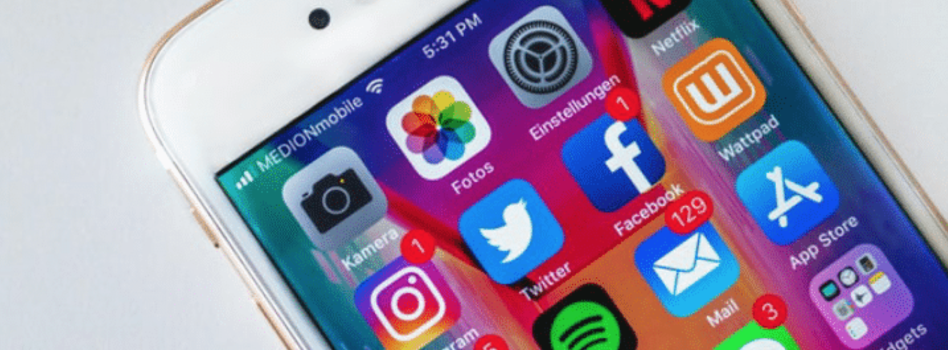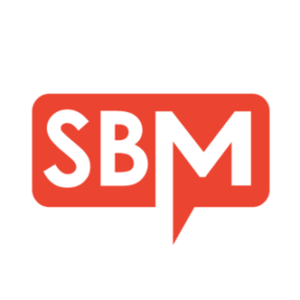You’ve finally finished producing an amazing blog post or website page. You spent hours researching and creating something you know parents are going to love. So much work has gone into this content, and you can’t wait for people to read it. This could be the post that goes viral and is read by thousands. Only one problem – how are people going to find it?
The reality is that you can’t publish your content and expect people to flock to it. The business model “build it and people will come” doesn’t work when it comes to inbound marketing. Your target audience isn’t going to be searching for you – you have to search for them. You have to promote your content in order to get it in front of as many potential new parents as possible.
There are a lot of ways to do this. However, there is one method that works a little better than others: social media.
According to Global Web Index, people spend an average of 2 hours and 22 minutes per day on social media. Social media offers a growing audience, the ability for followers to share content, advertising opportunities with spectacular targeting capability. The possibilities for social media promotion tactics are practically endless.
Here are 17 ways to use social media to promote your content.
Increase your posting frequency
I’m going to assume you’re already doing the basics – you’ve completed your profiles (all the way), you’re exploring and using new features and are using branded hashtags. And you’re already posting your new content to Facebook, Twitter, Instagram, Pinterest, and YouTube.
But are you posting frequently enough?
Everyone has an opinion about social media publishing frequency. Here is how often Hubspot recommends brands publish to social media:
- Facebook – 1-2 times per day
- Twitter – up to 15 times per day
- LinkedIn – once per weekday
- Instagram – 1-2 times per day
Of course, you should be testing and measuring the performance of your social media publishing frequency and adjust based on your metrics.
Time your social promotions
When should you publish your social media posts? It depends on your unique audience.
Most social media scheduling tool paid plans (such as Buffer, CoSchedule or Hootsuite) offer data on the best times to publish for your particular audience.
There are research studies that claim to reveal the “best” times to publish on each major platform. But take these studies with a grain of salt. A better approach is to do the work and find the ideal time(s) for your unique audience. Here’s a great article that outlines a process for determining your best time to post on social media.
Share your posts more than once
Yes, I know. Plenty of marketers are against sharing content more than once on a platform. But the research shows that resharing posts multiple times is an effective way to make sure your followers see your content.
Social media feeds are busy places. Most followers on most networks won’t see all of your posts. If anything, that makes resharing more important, not less. Don’t worry about people seeing the same post more than once. They most likely won’t notice, or care, especially on high-volume platforms like Twitter.
Instead, be concerned that your posts are reaching the right people at all.
The data says it all, in my opinion. In a survey conducted by CoSchedule, sharing the same social media post multiple times drove 192 percent more click-throughs. And Buffer offers three key benefits to resharing social content: more traffic, hitting multiple time zones and reaching new followers.
Now, this doesn’t mean you should be spammy with your reposts. Follow the golden rule and don’t repost content in a way you wouldn’t want content reshared on your feed.
There are lots of social media posting schedule templates you can use to set up your publishing schedule, but I happen to like this one by CoSchedule. Just remember to take your followers into consideration and remember your social media feed is for them, not for you.
Use interesting excerpts
Developing copy for your social media posts can be challenging because you have to condense your post into a brief sentence or two that will attract your audience to your content. Most experts recommend creating social media posts based on compelling excerpts of the original content. Quotes, statistics, and leading sentences tend to make great social posts.
Neil Patel suggests creating 20 snippets for each piece of content to be used for social media. He suggests variations on the title, quotes, original descriptions, and statistics. You never know what might appeal to your audience.
Leverage hashtags
The proper and controlled use of hashtags will get your content seen by more people.
Here is the current thinking on the number of hashtags you should use, based on recent studies.
- Facebook – 1-3 hashtags
- LinkedIn – Hashtags are only clickable on the LI mobile app. Try to weave them into the body of your LinkedIn Pulse articles, incorporate them into comments or include them in status updates to make your posts searchable.
- Twitter – 1-3 hashtags
- Instagram – 9-12 hashtags
- Pinterest – no more than 20 hashtags per Pin
- YouTube – use hashtags in the title or description. Add hashtags sparingly.
Post images separately on Facebook
When you copy and paste a link to a blog post or webpage, a preview will come up with a small thumbnail image. To really capture the attention of your viewers, upload your images directly and add relevant content details to the picture after the fact. You will be rewarded with a large image post that’s nearly impossible for your followers to ignore.
Create a Facebook lookalike audience
The decision to use Facebook paid advertising is becoming less and less of an option because organic post reach is so minimal these days. But there’s another reason to take advantage of Facebook’s paid advertising opportunity. When you use Facebook advertising, you can create and market to lookalike audiences.
Lookalike audiences are generated through the Facebook algorithm because they match certain characteristics of your existing followers. Using the Lookalike Audience feature you can get your posts seen by a whole new group of potential followers that are likely to be interested in your school.
Share to Facebook Groups
Groups are a great way to get around Facebook’s declining organic reach and engage directly with parents. What’s more, the data shows Groups are delivering a lot more engagement than Pages.
Don’t be too promotional or spammy when engaging in Groups. You could be banned from the Group. It’s better to join, engage and participate and then let people know about your school when it’s appropriate. You could even consider creating your own Group and sharing your content there to provide extra value for parents and followers.
Post to LinkedIn Groups
You may want to consider participating in LinkedIn Groups where your parents may be engaged. There are thousands of different LinkedIn Groups, so it is likely you will find one that’s targeted to local parents.
Find Groups by clicking on My Network on the top menu. From there, you will find Groups in the left-hand column. You can search for Groups by using the Search bar at the top after clicking on Groups.
Connect with Twitter Chats
You might be surprised at how many people participate in Twitter Chats. It might take a little practice to learn how to follow Twitter Chats, but these real-time discussions can be a great way to connect directly with parents. You can also consider starting your own Twitter Chat or joining in Chats that are already happening.
Here are some useful tools to help you get started:
- io – Free tool for following Twitter chats
- Twubs – allows you to adjust the speed of the tweets. Also gives you a schedule of Twitter chats.
- Tweetdeck – gives you several columns so you can easily follow along
- TwChat – allows you to create real-time chat rooms
- Twitter Chat Schedule – World’s largest list of Twitter Chats
Social bookmarking
Social bookmarking sites are sites on which users share their webpages, videos, articles, blog posts, and images. It’s a way for people to search, discover, collect and organize content using virtual “bookmarks.” Social media platforms are great for social bookmarking. As a matter of fact, Pinterest is one of the best examples of a bookmarking site.
Here are some bookmarking sites for you to consider.
- Reddit – 330 million users
Proceed with caution: Reddit is a tricky place to promote your content, as this community is highly suspicious of any activities that might be taken as promotion tactics. That said, if you’re interested in contributing content on relevant subreddits can be a great way to connect with parents. Using Reddit for school marketing can be like navigating a minefield, but it can be done as long as your intention is to be helpful and share useful information that the audience is interested in.
- Digg – 8 million users
Digg is a social bookmarking site that perfect for sharing your attractive content with a highly-engaged audience. It features the best articles, videos, and original content.
- Diigo – 7 million users
Diigo is a powerful research tool, ultimate social bookmarking site, and a knowledge-sharing community. It allows users to add highlights and notes to any page. Educators, students, researchers and anyone with an intelligent mind love Diigo. It is a great way to keep track of your resources and makes sharing content easy.
Medium is an influential blogging and content syndication platform. If you’re not publishing your content on Medium, you’re missing out on a huge opportunity.
- MetaFilter – 600K users
MetaFilter is a community weblog that anyone can contribute a link to or comment on. It features links to content that users have discovered.
Promotion tools
In these days of seemingly limitless content, the use of promotion tools can, in effect, become promotion tactics themselves. Here are some to consider:
- Quuu Promote is a content promotion tool that shares content on Facebook, Twitter, and LinkedIn. Just make sure your content follows their promotion guidelines and Quuu Promote does the rest. You can track and monitor shares, clicks and expiration dates for each campaign from the convenience of a dashboard. Quuu Promote helps more people see, share and engage with your content.
- BuzzSumo allows users to search for topics to see what types of content are performing well. You can use it to submit your own content as well as use the discovery reports feature to uncover topics for your school marketing efforts.
- Sniply boasts an impressive user base of companies like Hubspot, Outbrain, Forbes, and Buffer. This site allows you to attach a call-to-action to every link you share. It’s a great way to drive traffic to your own web properties as well as sharing others’ updates while helping you convert traffic into inquiries and enrollments.
- Scoopit bills itself as targeting “thought leaders”, “content marketers” and “knowledge masters”. Use this promotion tool to curate content (including your own) and publish it into an e-zine format to your blog or social profiles.
- Outbrain helps you distribute content and then optimize via testing and conversion tools. Outbrain will promote your content on relevant sites and posts to an audience already interested and engaged. Also great for native ads.
Consider traditional press releases
Despite their shady history as a link spam technique, press releases aren’t dead. The key is to only use them when you have something legitimately newsworthy to share.
When you do have something important to share, draft a press release and target it towards niche publications or websites that are likely to be interested in your news. An industry-leading service like PR Newswire can make the process fast, simple and far-reaching.
Take advantage of earned media
Earned media is a marketing tactic we tend to overlook. However, earned media is one of the most cost-effective ways to get your school’s message out there. And, since word of mouth is even more effective than paid media, earned media is even more crucial to gaining authority for your content efforts and improving your SEO.
Here are a few ways you can build relationships with influencers that are relevant to your school.
- Build a list of relevant books, blogs, and podcasts and review them. Every author, blogger, and podcaster needs reviews and ratings to gain more traction. Publishing your review gives you a great conversation starter and reason to reach out.
- Segment your connections in LinkedIn and “tag” them into certain folders. This turns LinkedIn into a powerful CRM tool that allows you to target messages to individuals or groups of people. There isn’t an easy way to go back and tag your contacts except one by one, so I highly recommend you do this each time you add a connection. This allows you to easily follow what your segmented groups of connections post and then comment and share it.
- Share your favorite bloggers’ content. Save your must-follow list in Feedly so you will know whenever they post new content and you can distribute it to your own networks.
- Consider creating a unique URL for each communication you have with media, bloggers, and influencers to track which ones visit your content, how they get there, how long they stay, what else they view and whether then download the content. Based on that information, you can refine your information and messages.
As you build your earned media relationships, pitch the same content topics you’re covering in your own blog – either as coverage, you can be a part of or contributed content. This is how you get on the fast track to owning page one for your topic in search engines. Whether you have one epic blog post or 200 posts on the same topic, in the eyes of Google, it doesn’t matter. What matters is how useful people find your content. Most importantly, do people link to your content? The earned media links you should try to get are high-authority domains that publish about (and rank on page one of Google) for your most important topics.
Test native advertisements
Native ads should be considered because paying for views may be one of the only promotion tactics left that can break through all the “noise” on the internet. Fortunately, the barrier for this type of promotion is low. Sites like Outbrain, Nativo, and StackAdapt make it a lot easier to get your content in front of your desired audience for a lot less than you might think. Try some of the best networks. Then try some others until you find the right marketing mix for your school.
Sign up for HARO
HARO stands for “Help A Reporter Out,” and it’s a great way to get your school’s name featured in a variety of different publications. Click here to link to HARO
Once you’re enrolled, the services sends out daily messages in which reporters share the types of experts they are looking to interview for their publications. Respond to an invitation if your skills and experience match up, and you could see yourself quoted in top publications like the New York Times and ABC News.
Sponsor events
Event sponsorships are one of the last true opportunities marketers have to gain links. Holding an event and offering sponsorships is a great way to generate links and media attention that isn’t inherently sketchy. It helps the community and the exposure and goodwill helps you – and your sponsors. It’s also a great way to build new relationships within the community.
There are lots of other social media promotion ideas out there, but these 17 will provide a rock-solid foundation you can use to get started.






